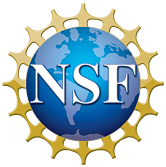Stratospheric chlorine processing after the unprecedented Hunga Tonga eruption
To Access Resource:
Questions? Email Resource Support Contact:
-
datahelp@ucar.edu
Temporal Range
-
Begin: 2022-06 End: 2022-08
| Resource Type | dataset |
|---|---|
| Temporal Range Begin | 2022-06 |
| Temporal Range End | 2022-08 |
| Temporal Resolution | N/A |
| Bounding Box North Lat | N/A |
| Bounding Box South Lat | N/A |
| Bounding Box West Long | N/A |
| Bounding Box East Long | N/A |
| Spatial Representation | N/A |
| Spatial Resolution | N/A |
| Related Links | N/A |
| Additional Information | N/A |
| Resource Format |
NetCDF |
| Standardized Resource Format |
NetCDF |
| Asset Size |
85103.593 MB |
| Legal Constraints |
Creative Commons Attribution 4.0 International License |
| Access Constraints |
None |
| Software Implementation Language | N/A |
| Resource Support Name | N/A |
|---|---|
| Resource Support Email | datahelp@ucar.edu |
| Resource Support Organization | N/A |
| Distributor |
NSF NCAR Geoscience Data Exchange |
| Metadata Contact Name | N/A |
| Metadata Contact Email | datahelp@ucar.edu |
| Metadata Contact Organization | NSF NCAR Geoscience Data Exchange |
| Author |
Zhang, Jun Wang, Peidong Kinnison, Douglas Solomon, Susan |
|---|---|
| Publisher |
NSF National Center for Atmospheric Research |
| Publication Date | 2024-02-05 |
| Digital Object Identifier (DOI) | https://doi.org/10.5065/j6yg-a009 |
| Alternate Identifier |
d583145 |
| Resource Version | N/A |
| Topic Category |
climatologyMeteorologyAtmosphere |
| Progress | completed |
| Metadata Date | 2025-10-09T01:45:39Z |
| Metadata Record Identifier | edu.ucar.gdex::d583145 |
| Metadata Language | eng; USA |
| Suggested Citation | Zhang, Jun, Wang, Peidong, Kinnison, Douglas, Solomon, Susan, Guan, Jian, Stone, Kane, Zhu, Yunqian. (2024). Stratospheric chlorine processing after the unprecedented Hunga Tonga eruption. NSF National Center for Atmospheric Research. https://doi.org/10.5065/j6yg-a009. Accessed 11 October 2025. |
Harvest Source
- ISO-19139 ISO-19139 Metadata

